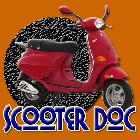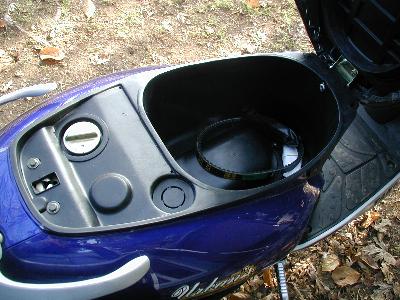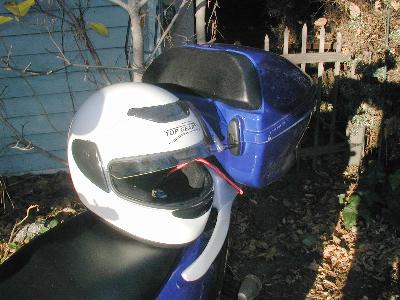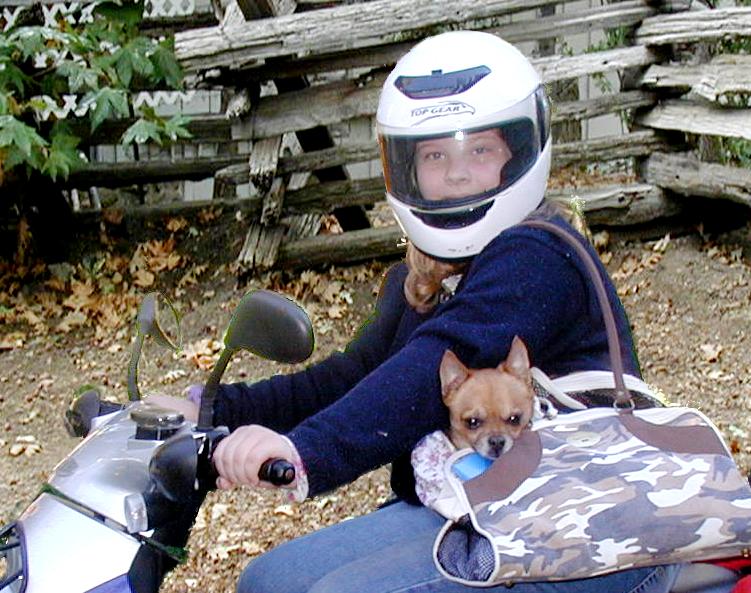Motor Scooters: Cargo and Storage Issues
Site Map
What's New
Features
Scooters from Amazon.comYes Man, Scooters in Film
Larry Crowne and scootering
Helmet Free scootering
Scooters in a failing economy
Scooter Economy
Scooter ROI Analysis
Scooter pays for itself
Types of Motorscooters
Why ride a scooter?
Motorscooter FAQ
Buying Scooters Online
Join Our Mailing List
Recommend this site
Scooter Inspiration
Scooter EconomyMotorscooter Advantages
Motorscooter Disadvantages
Motorscooter Books
Motor Scooter Poetry
Business Scooter Travel
Motorscooter Posters
Motorscooters in California
Scooting in the UK
Green Scooting in China
Scooting in Italy
Motorscooters in Iraq
Motor Scooter History
The Ice-Cream Scooter
Pets and Motorscooters
RVs and Motorscooters
Gas vs. Electric Scooters?
Put-putting Pleasures
Recommended Scooters
Scooter Culture
Larry Crowne (film)
Dating and Scooter Culture
Motorscooter Freedom
Motor Scooter Image
Scooter Lib
Back to School on a scooter
Motor Scooter Music
Motorscooter Camping
Types of Motorscooters
Classic Motor ScootersItalian Motor Scooters
The Vespa Motorscooter
The Aprilia Motorscooter
Falcon Electric Scooters
50cc Motorscooters
Kymco Motorscooters
GT Chaunl Scooters
Chinese Motor Scooters
TANK Motorscooters
The RoadRunner Scooter
Roketa Motorscooters
The I-scooter
Moped Scooters
Mopeds
Scooter Choices
Best Scooter DealsThe Performance Scooter
The Luxury Scooter
The Minimalist Scooter
The Classic Scooter
The Basic Scooter
The I-scooter
The Electric Scooter
Stand-up Scooters
The Mobility Scooter
Used Motorscooters
California Legal Scooters
Toy Scooters
Practical matters
Trouble starting a scooterScooters and the Environment
Scooter Return On Investment Analysis
Motor Scooter Repair
The Scooter Commute
Scooter Repair Shops
Scooter Replacement Parts
Vespa Repair
Scheduled Maintenance
Fuel Efficient Driving
Essential Scooterist Kit
Passengers on a Scooter
Motor Scooter parking
Using the Kick Starter
Motor Scooter Batteries
Motor Scooter Stands
Rotating a Scooter
Cargo Storage Issues
Chinese Scooter Alarms
Scooter Roadside Assistance
Affordable Insurance
Scootering in groups
Motorscooter safety
Motorscooter SafetyDriving a Motorscooter
MSF Manual: Your Scooter
Scooters and Potholes
Important, before you drive
Motorscooter Helmets
All-weather Scootering
The Oily Path of Safety
Motorscooter Journal
Motorscooter JournalOff-highway scooter routes
The Scooterdoc
Scooter Choice Ethics
India Shuns Scooters
Left-handed Motorscooters
Other Types of Scooters
Mobility ScootersScooter-inspired Vehicles
Electric Motorscooters
The Three-wheel Scooter

Vespa Service In
Southern California
Cargo and Storage Issues

in many countries, but is somewhat more limited in the USA.
Even within the modest and conservative guidelines placed upon cargo hauling in US states, the motorscooter can be laden with vast quantities of freight without compromizing safety and stability. A full shopping load comes easily withing the intended weight capacity of a 150cc scooter whose pillion seat is designed for well over 100 lbs., even when driven by a scooterist of significant adipose rotundity.

Most Motor Scooters come with under-the-seat storage, some have a front glove box, and many may be fitted with a bolt-on trunk that also serves as a backrest for the passenger. The under-seat compartment and trunk are ostensibly capable of storing a helmet each, however, this is not true of full-face helmets which do not come close to fitting into either compartment.
It may be seem convenient to store helmets away in this way but it is actually a dreadful waste of space. Helmets may be safely cabled to the rack when the scooter is parked leaving valuable storage space for such essential items as an emergency Frisbee, maps, dictionaries, marmlade sandwiches and pickled onions.

While driving alone, a passenger helmet may be conveniently secured resting on the empty passenger seat -- simply bungeed on if one is expecting to pick up a passenger (in which case it should be easily removable for the passenger to wear), or cable locked if the scooter is to be left parked. Simply setting the spare helmet on the pillion seat, cable-locked but unbungied, works just fine and the helment, though not really fastened in place is not inclined to go anywhere (of course the cable lock would prevent it from going far). This method is very convenient and in my 5+ years of scootering, has never been a problem.
Note that the presence of a spare helmet serves also as an invitation. It says: "I don't have a passenger but am prepared for one." See Dating And Scooter Culture.

When parked, one simply passes the cable lock through both helmets. Attaching half and three-quarter helmets necessitates using the helmet strap to attach to, and passing the cable lock through the strap rings.
The motorscooter has also served as the foundation for a number of very economical, yet capacious cargo and passenger vehicles. See Scooter Inspired Vehicles, and Three-wheel scooters.
Many alternative ways can be found to haul cargo on a scooter and, though common in Thailand where this picture was taken, their legality in many U.S. states is questionable (but don't you love the concept?). This series of scooter pictures from Vietnam show them being used to haul everything. From five-person buss to haywain, the scooter is highly adaptable.

It is often more convenient to carry a bag to avoid having to pack and unpack scooter storage compartments during departure and arrival. Backpacks are commonly used by motorcyclists but have their limitations. The driver cannot comfortably wear a backpack if carrying a passenger (at least it is not comfortable for the passenger). The passenger may not wear more than a small pack if the scooter has a trunk attached. The backpack will probably not fit in the trunk and can only be attached to the top of the trunk if a rack or fasteners are attached (not normally standard equipment on scooter trunks, though they can be added).

One very workable carry-on solution is the shoulder bag. Both driver and passenger can wear over-the-shoulder bags without difficulty. Some over-the-shoulder bags are quite as capacious as backpacks.

Sometimes the shoulder bag is for passengers. Though in the illustration it appears that the strap is only over the left shoulder, this pack has a strap over both shoulders. Scarabers, mostly chiuaua, loves travelling like this though he is usually zipped in. See Pets on Scooters.

Some scooters are made specifically for delivering cargo. The TGB Delivery, for example has a large insulated trunk with an optional heated bag for pizza or other hot food deliveries.
Bookmark this page to:
